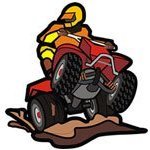By
Kaz
Troubleshooting a no spark issue, was running OK, maybe a little rich, turned it off, now no spark. I've checked/ohmed out the main key switch, the start/stop switch, neutral switch, brake switch - all good. It will crank the starter, but no spark with the starter or when I try the pull start. I've checked all fuses and diodes. Swapped battery. New plug. New coil. Swapped in a used CDI - no help. Traced, removed, cleaned, reattached all grounds. Removed things like my winch from the circuits to be sure a bad relay or something was dragging it down. When testing voltages, the orange wire going from the CDI to the ignition coil shows no/very low voltage-shouldn't it have 12V on it? Sometimes I get a very weak, intermittent glow on my spark tester, but not enough to fire the plug. I've checked continuity on just about all wires in the harness. Checked/cleaned/lubed w dielectric grease- all connections, redid a few that looked old/dirty. I've checked the stator resistances, all good, but have a stator and rectifier ordered anyway, will arrive Sunday. I verified that the rectifier has a voltage output back to charge the battery while cranking - 10.5-11V, low, but expected while starter is engaged. What else can I check as part of troubleshooting? I have a Haines service manual, but the 1999 350 4x4 seems to be an odd model, there isn't an exact electrical diagram for it, but found one for another year that has all the same number of wires and same color wires, so I've referenced that. Any hints, tips or advice would be appreciated! Thanks!








Recommended Posts
Join the conversation
You can post now and register later. If you have an account, sign in now to post with your account.
Note: Your post will require moderator approval before it will be visible.